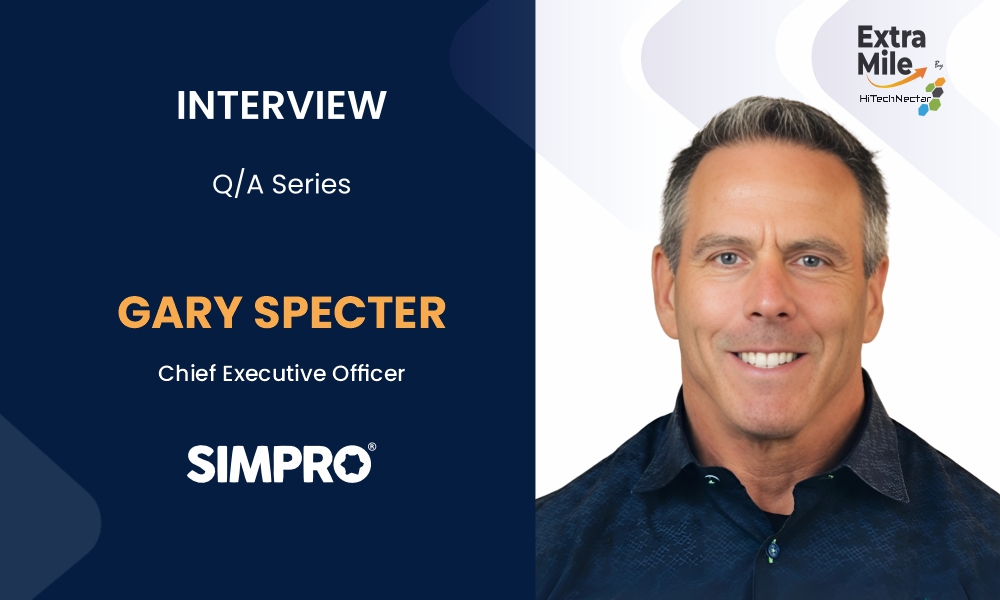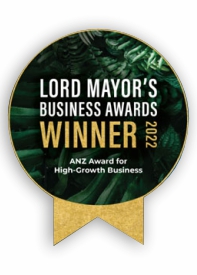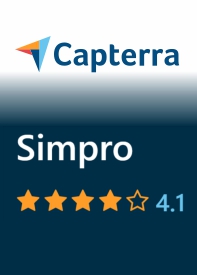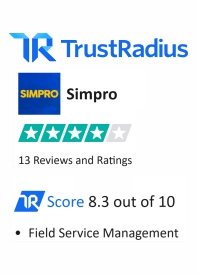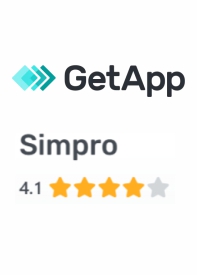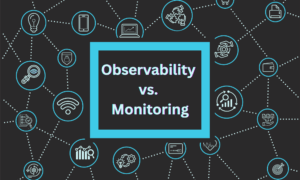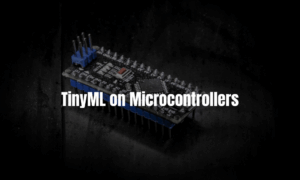Welcome to the latest Q&A session of ExtraMile by HiTechNectar, where we bring you exclusive insights from industry leaders who are leading the way in technology and innovation.
Today, we are excited to feature Gary Specter, Chief Executive Officer of Simpro Software, a global leader in field service management software. With over 30 years of experience scaling tech giants like Adobe, NetSuite, and Cart.com, Gary now leads Simpro Software in revolutionizing how trade businesses operate.
In this interview, Gary shares what surprised him most about the field service sector, from untapped possibilities to the stubborn reliance on outdated tools. He dives into how Simpro stays close to its customers, the impact of strategic partnerships like Sage Intacct, and the biggest challenges still facing the industry.
Whether you are a trade business owner, a tech enthusiast, or just curious about the future of field services, Gary’s insights are must-read.
Hello Gary, Hope you are doing great today!
Q1. What surprised you most about the field service management sector when you stepped into leadership?
Gary. When I joined Simpro after working with companies like Adobe and Cart.com, I was struck by the sheer scale of opportunity in the field service management sector. The addressable market is massive, yet there’s no single global leader in commercial field services. Unlike CRM or ERP, where Salesforce and SAP are household names, the field services industry remains fragmented, with different leaders in each region.
What also surprised me was the low level of technology adoption. Many businesses still rely on spreadsheets, paper, and whiteboards. The potential for digital transformation is enormous, and that’s where Simpro is uniquely positioned to lead.
Q2. How do you maintain that hands-on industry perspective as Simpro grows globally?
Gary. Simpro was built by tradespeople for tradespeople, and we honor that legacy by staying close to our customers. Just last week, I did a ride-along with a technician to see firsthand how they interact with our platform. That kind of field experience is invaluable. It helps us identify ways to reduce operational friction and improve outcomes.
We don’t just talk to our customers; we work alongside them. That’s how we uncover real-world insights that drive product innovation. For example, understanding how techs access historical job data, like photos, previous billing statements, and logistics information, has helped us enhance our platform in meaningful ways.
Q3. How does your recent collaboration with Sage Intacct create better solutions for trade professionals?
Gary. Partnerships like the one with Sage Intacct are about building a stronger ecosystem for our customers. By connecting with suppliers, technology providers, and solution partners, we create a more integrated and valuable experience. The sum is greater than its parts and these collaborations give our customers access to more tools and capabilities when they need them most.
Q4. How does Simpro turn operational data into actionable insights for business owners?
Gary. Our platform provides real-time job costing, inventory tracking, and other analytics that give business owners visibility into their operations. This helps them determine job profitability, identify margin opportunities, and make informed decisions about hiring and resource allocation. It’s about turning data into strategy, which in turn helps our customers grow smarter and faster.
Q5. What is one persistent problem in field service management that existing tech hasn’t fully solved yet?
Gary. The labor shortage. Every customer I speak with is struggling to find qualified technicians. While technology can improve efficiency, it can’t fully solve the talent gap – at least not yet. This remains one of the biggest barriers to scaling in the industry.
At Simpro, our commitment to customer-centricity drives everything we do. We’re actively exploring new initiatives to support our customers, including efforts led by our leadership team to help address certain aspects of the talent gap. We look forward to sharing more details on these opportunities in the near future.
Q6. How has the 2021 investment from K1 transformed Simpro’s capabilities?
Gary. The investment from K1 Investment Management has been a game-changer. It’s accelerated our organic growth and enabled strategic acquisitions like BigChange. We’ve also invested heavily in go-to-market strategies and product innovation, which has allowed us to scale faster and deliver more value to our customers.
Q7. How do you define and measure real success for your customers?
Gary. Success is multi-dimensional. It’s about cost savings, time efficiency, and employee satisfaction. But more than that, it’s about visibility. If a customer can clearly see how their business is performing – i.e. where they’re profitable and where they have areas to improve – they’re empowered to grow. That’s the real value of our platform.
Q8. What are the most significant opportunities for innovation in trade business software over the next five years?
Gary. The future of field service lies in technology adoption and deeper integration of tools and functionality – across scheduling, resource allocation, fleet management, and more. As these workflows become more connected, AI will play a central role in driving automation and insight. We’re on the cusp of a major disruption, where access to unified data will unlock new levels of efficiency and growth for trade businesses. We’re excited to be at the forefront!
Explore Our Other Insightful Interviews:
